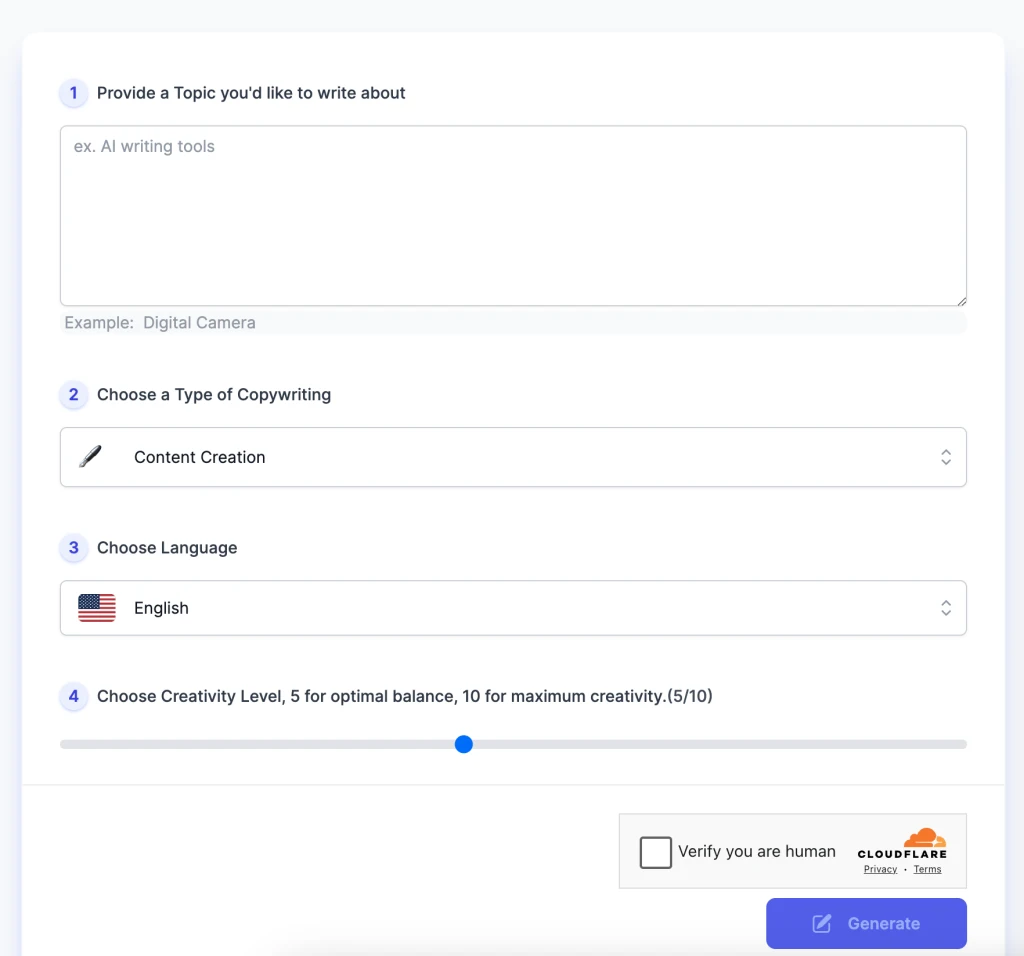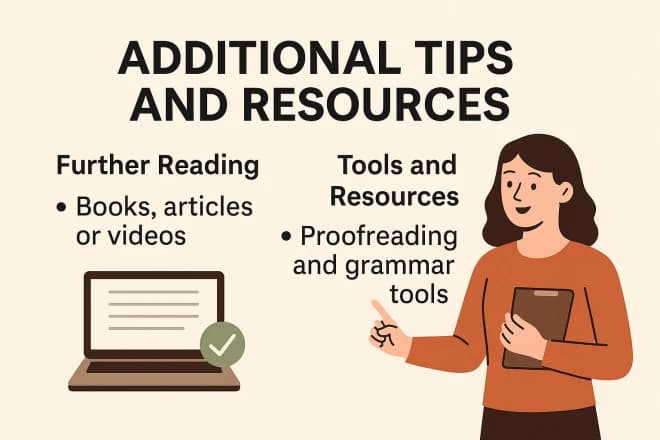Unlock Insights: Find the Answers You Seek on Our Blog
Mastering Pointed Copywriting: Boost Your Click-Through Rates with Clear and Direct Content
By Evelyn Sterling
Pointed copywriting is the process of creating content that is concise, direct, and precisely aimed at achieving its purpose. This method emphasizes crafting messages that are clear and succinct, effectively cutting through distractions to engage the reader. The goal is to select words that not only attract attention but also drive the reader to act. This approach is particularly crucial in marketing and advertising, where the ability to quickly capture the audience’s interest and prompt them to respond is essential.
Pointed copywriting is built on four foundational principles: clarity, brevity, relevance, and persuasiveness. Mastering these principles can transform your writing, making it more impactful and effective in achieving its purpose.
Clarity: How to Ensure Your Message is Clear and Understandable
Clarity is the cornerstone of pointed copywriting. Your message should be straightforward and easy to comprehend. To achieve this, use simple language and short sentences. Avoid jargon or complex terminology that might confuse the reader. Be explicit about what you want to convey and ensure that every word serves a purpose in delivering your message. Remember, the goal is to make your content as accessible as possible, so that anyone reading it can quickly grasp the intended message.
Brevity: The Art of Being Concise Without Losing Message Value
Brevity in copywriting means expressing your message in the fewest possible words without sacrificing its meaning or intent. It’s about getting to the point and eliminating any unnecessary filler content. This doesn’t mean you should omit important details, but rather that you should be selective about what to include. Every sentence should contribute to your overall message or call to action. This concise approach respects the reader’s time and attention, making your content more likely to be read and acted upon.
Relevance: Ensuring Content is Directly Related to Audience Needs and Interests
Your copywriting must resonate with your target audience to be effective. This means understanding their needs, problems, and interests and tailoring your message accordingly. Conducting audience research and creating buyer personas can help you align your content with the audience’s preferences and pain points. Relevant content is more engaging and likely to prompt action, as it speaks directly to the reader’s situation or desires.
Persuasiveness: Techniques to Motivate and Persuade the Reader
Persuasiveness is about convincing the reader to take a specific action, whether it’s making a purchase, signing up for a newsletter, or clicking on a link. Use compelling arguments, facts, and emotional appeals to persuade your audience. Highlight the benefits of your offering, and why it stands out from the competition. Effective use of persuasive techniques can greatly enhance the impact of your copywriting, turning passive readers into active participants.
By adhering to these principles, pointed copywriting becomes a powerful method to convey your message effectively. It’s not just about what you say, but how you say it, ensuring that your writing is clear, concise, relevant, and persuasive.

Understanding Your Audience
The success of pointed copywriting hinges on how well you understand your target audience. Knowing who you are writing for and what resonates with them allows you to tailor your message effectively, ensuring it strikes a chord and prompts action.
How to Research and Understand Your Target Audience
Audience research is the process of gathering information about the people you intend to reach with your message. This can include demographic data like age, gender, and location, as well as psychographic information such as interests, values, and lifestyle. Here are some steps to conduct thorough audience research:
- Analyze existing customer data: Look at your current customer base to identify common characteristics and trends. This can provide a solid starting point for understanding your broader audience.
- Utilize social media analytics: Platforms like Facebook, Instagram, and Twitter provide insights into who is interacting with your content and how they are engaging with it.
- Conduct surveys and interviews: Direct feedback from customers or potential customers can provide deep insights into their needs, preferences, and pain points.
- Monitor online communities: Participate in or observe forums, social media groups, and other online communities where your target audience congregates to understand their discussions and concerns.
Tailoring Your Message to Meet the Audience’s Needs and Preferences
Once you have a clear understanding of your target audience, you can start tailoring your message to meet their specific needs and preferences. Here’s how you can do that:
- Speak their language: Use terminology and phrases that are familiar to your audience to make your content relatable and engaging.
- Address their pain points: Highlight how your product or service solves a specific problem or meets a need that is relevant to your audience.
- Align with their values: Show how your brand’s values align with those of your audience to create a deeper connection and trust.
- Personalize the experience: Use data to personalize your messages, making them more relevant to individual members of your audience.
By thoroughly understanding your audience and crafting your message to align with their needs and preferences, your pointed copywriting will be much more effective. This approach ensures that your content is not only seen but also resonates with the people you’re trying to reach, increasing the likelihood of achieving your communication goals.
Mastering Pointed Copywriting: Crafting Your Message with Precision
Crafting your message in pointed copywriting involves careful consideration of structure, word choice, and the call to action (CTA). Each of these elements plays a crucial role in making your content impactful and driving the reader to take the desired action.
Structuring Your Content for Impact and Readability
The structure of your content should guide the reader through the message in a logical and compelling manner. Here’s how to structure your content effectively:
- Start with a strong headline: Your headline should grab attention and clearly convey the benefit or value of reading further.
- Use subheadings to break up text: Subheadings make your content easier to scan and help guide the reader through your message.
- Lead with the most important information: Don’t bury the lead. Present the key message or value proposition early in the content.
- Use short paragraphs and sentences: This improves readability and makes the content more digestible.
- Incorporate bullet points or lists: These help to organize information clearly and highlight key points.
Choosing the Right Words: Power Words and Phrases That Sell
The words you choose can significantly affect the persuasiveness of your message. Power words are emotionally charged words that can trigger a psychological or emotional response. They can make your copy more compelling and memorable. Here are tips for choosing the right words:
- Use action verbs: Words like ‘discover’, ‘achieve’, and ‘create’ can motivate the reader to take action.
- Incorporate emotional triggers: Words like ‘free’, ‘exclusive’, or ‘limited-time’ can create a sense of urgency or exclusivity.
- Be specific: Specificity adds credibility and helps the reader visualize the benefit or outcome of taking action.
Call to Action (CTA): How to Write Compelling CTAs
A CTA is a crucial element in copywriting that instructs the reader on what to do next. A compelling CTA can make the difference between a passive reader and an active participant. Here’s how to craft an effective CTA:
- Be clear and specific: Your CTA should leave no doubt about what you want the reader to do, whether it’s to ‘Sign up now’, ‘Download the free guide’, or ‘Start your trial’.
- Use strong command verbs: Start your CTA with verbs like ‘buy’, ‘order’, ‘subscribe’, or ‘contact’ to encourage action.
- Create a sense of urgency: Encourage immediate action by adding elements of scarcity or time limitation, like ‘Offer ends soon’ or ‘Limited availability’.
- Make it visually distinct: Ensure your CTA stands out from the rest of the content, using buttons, colors, or typography to draw attention.
By meticulously structuring your content, choosing the right words, and crafting a compelling call to action, you can enhance the effectiveness of your pointed copywriting. This strategic approach ensures that your message is not only read but also acted upon, driving the desired outcomes for your business or campaign.
Tips and Techniques for Effective Pointed Copywriting
To elevate your pointed copywriting skills, integrating storytelling elements, understanding SEO, and meticulously editing your copy are essential. These tips and techniques can help make your content more engaging, discoverable, and impactful.
Using Storytelling to Engage and Persuade
Storytelling is a powerful tool in copywriting, capable of transforming a simple message into a compelling narrative that resonates with the audience. Here’s how to use storytelling effectively:
- Incorporate a relatable protagonist: Use a character your audience can identify with, which can be a customer, the reader themselves, or even the product as the hero.
- Create a conflict or challenge: Present a problem that your protagonist faces, which should be a common issue that your product or service can resolve.
- Provide a resolution: Show how the protagonist overcomes the challenge using your product or service, highlighting the benefits and value it offers.
The Role of SEO in Pointed Copywriting
SEO (Search Engine Optimization) is crucial for ensuring that your content is found by the right audience online. Here’s how to integrate SEO into your copywriting:
- Conduct keyword research: Identify the keywords and phrases your target audience uses in search queries related to your topic or industry.
- Optimize your content: Integrate these keywords naturally into your headlines, subheadings, and body content to improve your search rankings.
- Optimize for intent: Understand the search intent behind the keywords and tailor your content to meet those needs, whether informational, navigational, or transactional.
Editing and Refining Your Copy to Perfection
The editing process is where good copy becomes great. It’s the final step to refine your message and ensure it’s clear, concise, and compelling. Here are some editing tips:
- Be ruthless in cutting fluff: Remove any words, sentences, or paragraphs that don’t add value or move the reader closer to the action you want them to take.
- Read aloud: This helps you catch awkward phrasing or overly complex sentences that might confuse the reader.
- Use active voice: Active voice makes your writing more direct and dynamic, which is more engaging for the reader.
- Get feedback: Have someone else review your copy. Fresh eyes can catch errors you might have missed and provide valuable insight on how your message is perceived.
By implementing these tips and techniques, you can significantly improve the effectiveness of your pointed copywriting. Engaging storytelling, SEO optimization, and meticulous editing are key to creating content that not only captures attention but also drives action.
Examples of Successful Pointed Copywriting
Examining successful pointed copywriting examples can provide valuable insights into crafting compelling messages. Let’s look at two examples from well-known brands and analyze what makes them effective.
Example 1: Apple’s iPhone Advertising
Apple is renowned for its minimalistic and pointed copywriting, particularly in its iPhone advertising campaigns. One of their iconic taglines, “The ultimate iPhone,” succinctly conveys the message that the latest iPhone is the best in the market. This effectiveness stems from:
- Brevity: The message is short and to the point, making it easy to remember and impactful.
- Clarity: It clearly communicates the product’s position as the top choice, without unnecessary details.
- Value proposition: It directly tells the consumer the benefit of the product, positioning it as the ultimate choice.
- Learning Application: Keep your message concise and clear, focusing on the core value proposition of your product or service to quickly inform and appeal to your audience.
Example 2: Nike’s “Just Do It” Campaign
Nike’s “Just Do It” campaign is a prime example of powerful pointed copywriting. This slogan is incredibly motivating and action-oriented, encouraging people to push past procrastination or fear.
- Emotional appeal: It taps into the audience’s emotions, inspiring action and determination.
- Universality: The phrase is broad enough to apply to various contexts, appealing to a wide audience.
- Memorability: Its simplicity makes it easily memorable, ensuring it sticks in the minds of consumers.
Learning Application: Craft messages that resonate emotionally with your audience, encouraging them to take action. A memorable and universally applicable phrase can transcend the confines of specific products or services, embedding your brand in the cultural consciousness.
These examples showcase how pointed copywriting can effectively convey a brand’s message in a concise and memorable way, creating a strong emotional connection with the audience. Applying these principles—clarity, brevity, emotional appeal, and a strong call to action—can help you craft successful copy that resonates with and motivates your audience.
Utilizing AI Copywriters for Successful Pointed Copywriting
What is AI Copy Writer
AI Copy Writer is an online tool powered by artificial intelligence designed to assist in the content creation process. It leverages natural language processing (NLP) and machine learning algorithms to generate text that mimics human writing styles. This tool is capable of producing a wide range of content types, including marketing copy, blog posts, social media updates, and more. The main advantage of AI copywriter is their ability to quickly generate ideas and drafts, helping to streamline the content creation workflow and boost productivity.
Step-by-Step Guide to Using the AI Copy Writer Tool
Step 1: Choose Your Topic
- Begin by providing a specific topic that you want the AI to write about. This should be as precise as possible to ensure the content generated is relevant. For instance, if you want to create content about ‘AI writing tools’, simply type that into the provided field.
Step 2: Select Your Copywriting Type
- Next, choose the type of copywriting you need. If it’s for content creation, make sure that option is selected. This setting helps the AI tailor its writing style to the correct format, whether it’s for blog posts, social media, ads, or another medium.
Step 3: Choose Your Language
- Select the language in which you want your content written. If you need your content in English, make sure the English option is highlighted or selected.
Step 4: Set Your Creativity Level
- Adjust the creativity level according to your needs. If you’re looking for a balance between innovation and staying on topic, set it around 5. If you want the AI to be as creative as possible, you might slide it up to 10. This will influence how the AI constructs and presents the copy.
Step 5: Human Verification
- Before you proceed, complete human verification steps. This involves a CAPTCHA to ensure that the request is being made by a real person and not an automated process.
Step 6: Generate Your Content
- Finally, click the ‘Generate’ button. The AI will process your inputs and produce content based on your specifications. Review the generated content and use it as a complete piece or as a starting point for your own writing
Tools and Resources
To excel in pointed copywriting, it’s important to have a suite of tools and resources at your disposal. Here’s a compilation of recommended tools and educational resources to enhance your copywriting proficiency.
Tools for Keyword Research and SEO
- Google Keyword Planner: A free tool that allows you to discover keywords related to your business and see estimates of the searches they receive and the cost to target them.
- SEMrush: A comprehensive tool that offers advanced keyword research, competitor analysis, and Google SERP position tracking.
- Ahrefs: Known for its backlink analysis strength, Ahrefs also provides keyword research and content exploration tools.
- Moz Keyword Explorer: Offers keyword suggestions, SERP analysis, and keyword difficulty scores.
Tools for Grammar and Style
- Grammarly: A user-friendly grammar and style checker that can be integrated into your browser for real-time editing assistance.
- Hemingway App: A tool that helps simplify and clarify your writing by highlighting complex sentences and suggesting alternatives.
- ProWritingAid: Provides in-depth writing analysis to improve readability, grammar, and style.
Books to Improve Copywriting Skills
- “On Writing Well” by William Zinsser: This classic guide to writing nonfiction is essential for understanding the principles of clear and effective writing.
- “Everybody Writes” by Ann Handley: A go-to guide for creating and publishing content that will help you attract and retain customers.
- “The Copywriter’s Handbook” by Robert W. Bly: A practical manual of copywriting tips and tutorials for a multitude of media types.
Online Courses and Resources
- Copyblogger: Offers a range of articles, seminars, and courses that teach effective copywriting techniques.
- HubSpot Academy: Provides free certification courses in content marketing and copywriting, among other topics.
- Coursera and Udemy: These platforms have a variety of copywriting courses ranging from beginner to advanced levels taught by industry professionals.
Practice and Community Engagement
- Reddit and Quora: Engaging in community discussions can provide practical insights and feedback on your copywriting.
- Local workshops or meetups: Participating in community events can lead to learning from peers and sharing experiences.
Continuous Learning
- Google Analytics Academy: Understanding how to analyze content performance can significantly improve your copywriting by teaching you what resonates with your audience.
- Content Marketing Institute: Offers a library of resources to help you keep up with the latest trends and best practices in content marketing and copywriting.
By utilizing these tools and resources, you can stay at the top of your copywriting game. Keyword research and SEO tools will ensure your content is seen, while grammar and style tools will help it shine. Books, courses, and community resources will deepen your understanding and keep your skills sharp.
Conclusion
Mastering the craft of pointed copywriting is a journey of continuous learning and application. As we’ve explored, the principles of clarity, brevity, relevance, and persuasiveness form the bedrock of writing content that not only grabs attention but also drives action. By understanding your audience and carefully structuring your message, you create a pathway to engaging and effective communication.
I encourage you to take these principles and techniques into your own hands. Start by applying the concepts of clear and direct communication to your writing. Practice the art of conciseness; every word should earn its place on the page. Tailor your content to resonate deeply with your audience’s needs and desires, and always aim to persuade with honesty and integrity.
AI Tools Categories
Browse all AI tools by category
All AI Tools
229Amazon
5AI Writing Generator
85Article & Content Writing
35Branding & Identity
54Content Generation
170Creative Ideas
32Educational Resources
34E-commerce
14Etsy
6Events & Celebrations
13Facebook
6Gaming & Fun
5Instagram
3Lifestyle & Personal
8LinkedIn
6Marketing & SEO
40Poem & Lyrics Writing
19Professional Documents
31Social Media
44Story & Book Writing
49Text Effects
14TikTok
7Twitter
3Writing Enhancement
36YouTube
11
Highly rated and most popular AI tools curated by our experts
Recently added AI tools that are gaining traction
- AI Post Generator

- AI Bullet Point Generator

- AI Discussion Post Generator

- AI 2 Weeks Notice Letter Generator

- AI Content Creation Ideas Generator

- AI Radio Ad Script Generator

- AI Podcast Script Generator

- AI Resume Objective Generator

- AI Resume Headline Generator

- AI Password Generator

- AI Snapchat Caption Generator

- AI Snapchat Username Generator

- AI Pinterest Board Name Generator

- AI LinkedIn Experience Description Generator

- AI Twitter Hashtag Generator

- AI YouTube Short Idea Generator

we prioritize displaying the latest content closely related to the current blog post.








